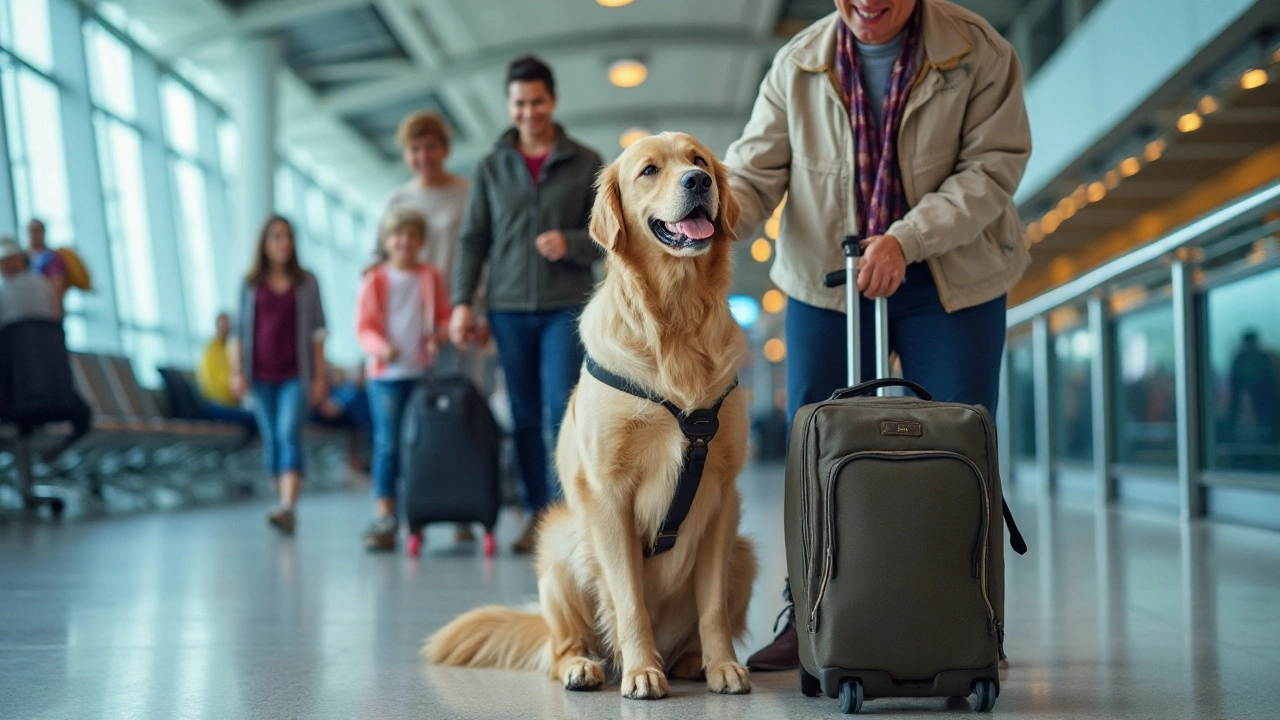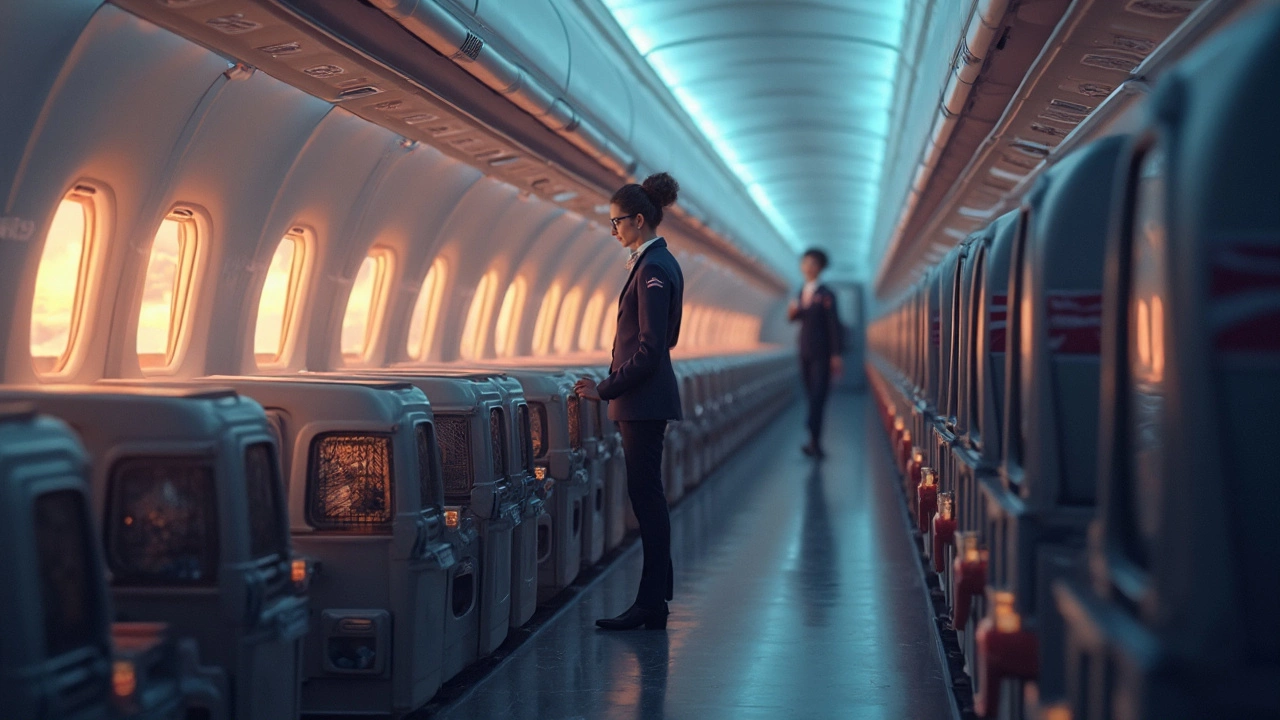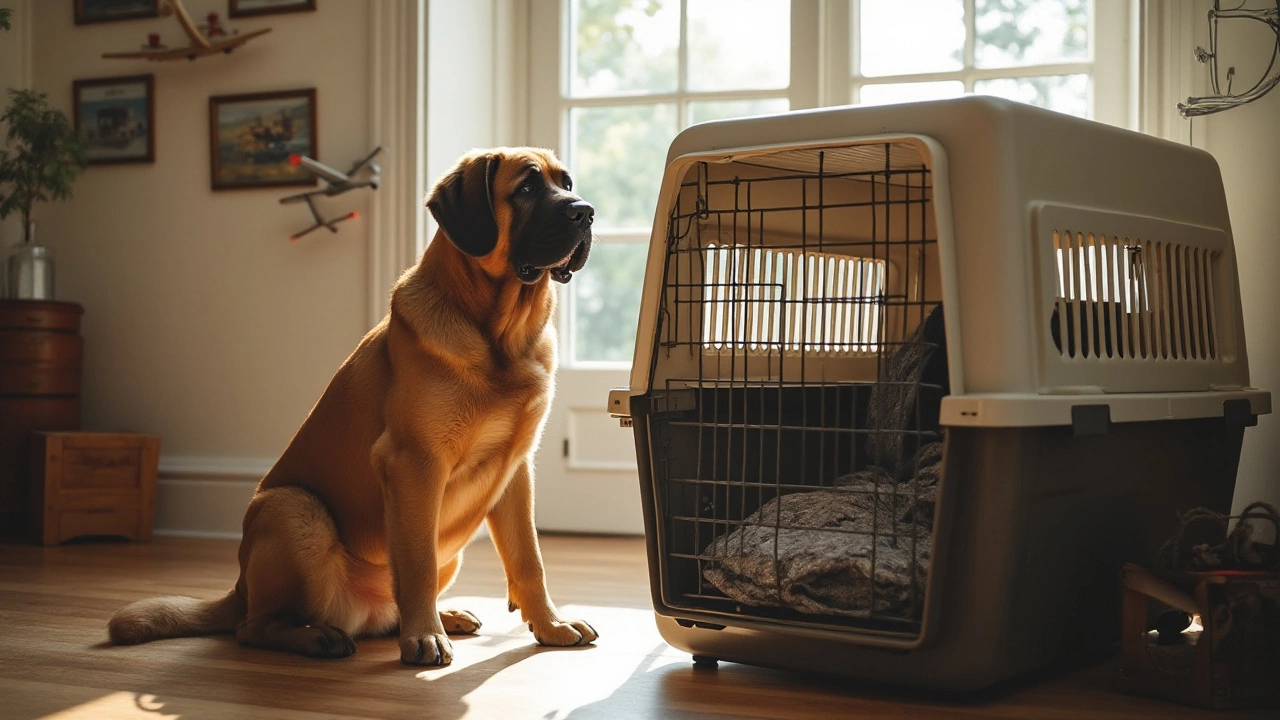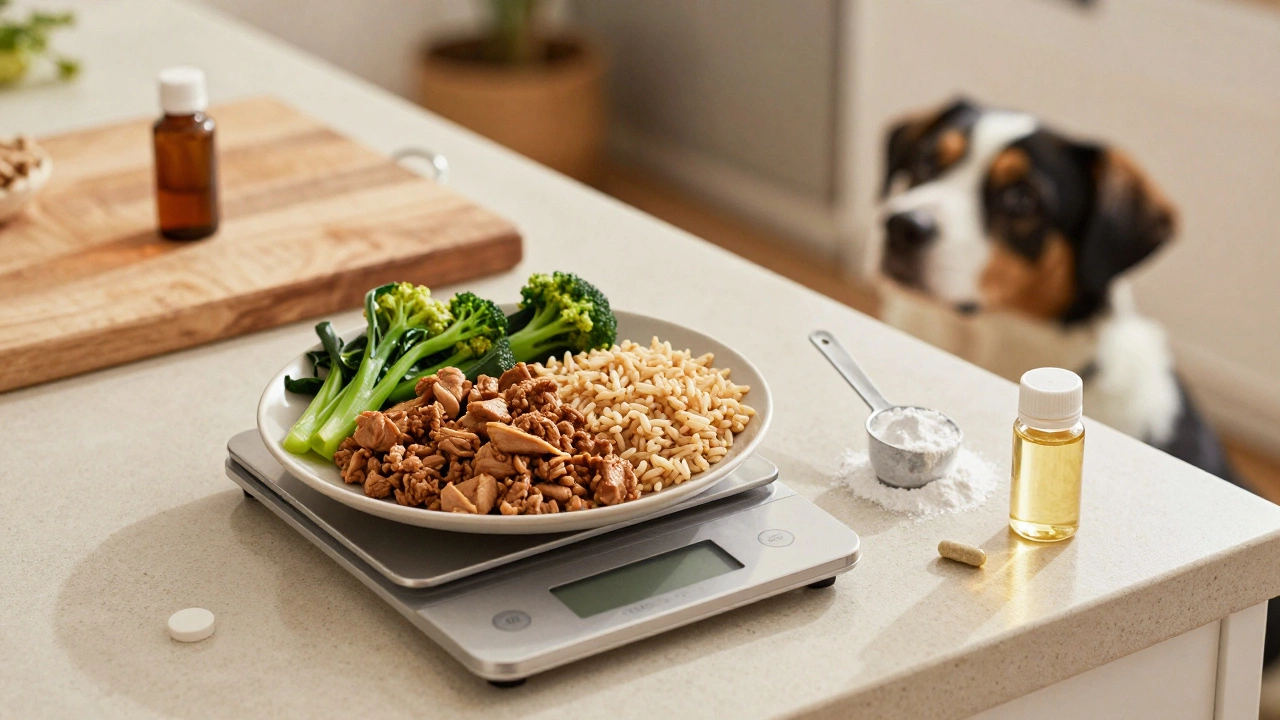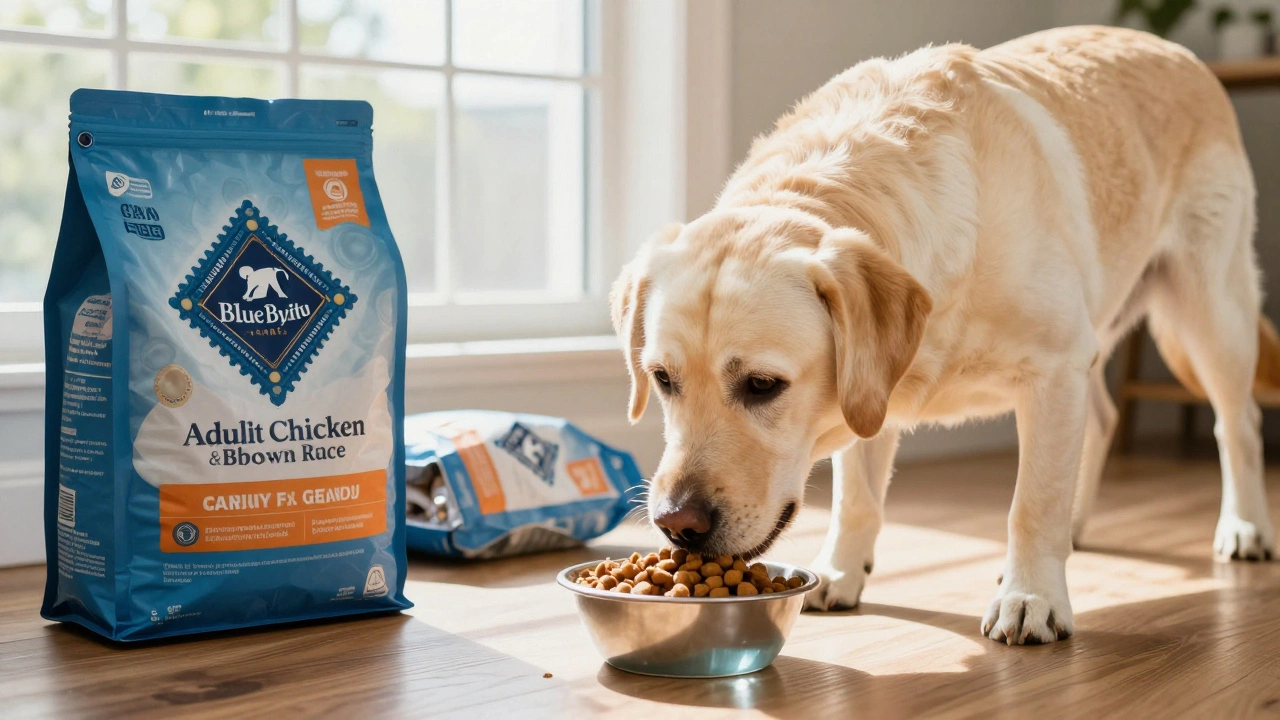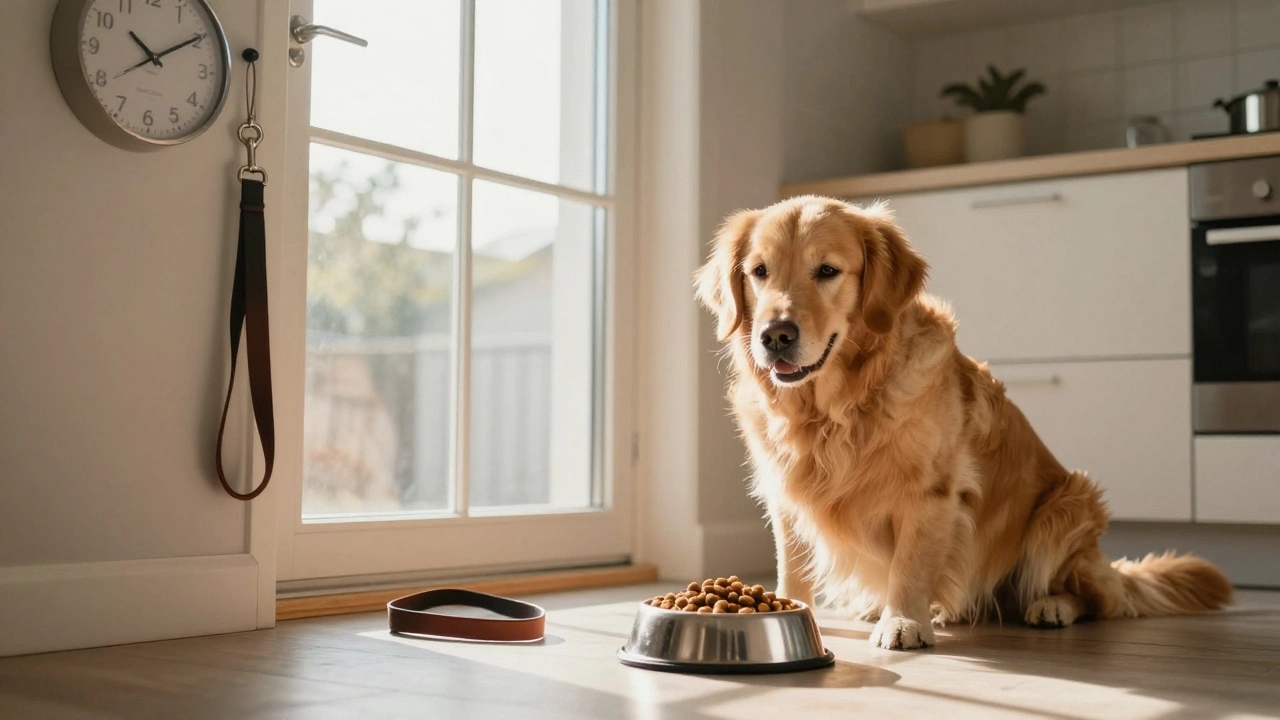Traveling with a large dog by air can feel overwhelming at first glance, especially when faced with diverse airline policies. Yet, many airlines today understand the growing need for pet-friendly travel, offering accommodations suitable for sizeable companions. Deciphering these options is crucial to ensure comfort and safety for both you and your furry friend.
This article dives into the heart of what you should expect from airlines that allow larger dogs, offering insights and tips to navigate through each step of your journey. From understanding specific airline policies to practical advice on preparing your pet, this guide aims to provide all you need for a smooth travel experience. Let's unpack what it takes to fly the skies with your lovable, large dog companion.
- Understanding Airline Pet Policies
- Major Airlines That Allow Large Dogs
- Preparing Your Large Dog for Air Travel
- Safety Tips for Flying with Large Dogs
- Essential Travel Documentation
Understanding Airline Pet Policies
Navigating the murky waters of airline pet policies can feel like deciphering an ancient map. Rules change rapidly, and each airline seems to have its own secret language when it comes to flying with large animals. It’s not just about finding an airline that allows your big furry companion but ensuring they do so in a way that prioritizes safety and comfort. Let's break down the essentials, so you’re not caught off guard at the airport.
First and foremost, it’s crucial to understand that not all airlines have a uniform policy. Large dogs are generally not allowed in the passenger cabin and usually travel in the cargo hold. This doesn’t mean it’s unsafe; airlines make significant efforts to modify cargo areas to suit animal needs. Areas are pressurized and temperature-controlled, specifically set to ensure your pet's safety during the journey. The key is to contact the airline well in advance to confirm the specific details and understand which documentation is required. Some airlines require health certificates or even proof of specific vaccinations.
A notable tip is to look into airlines that have reputations for good pet handling. For instance, certain North American and European carriers often get praise for their animal-friendly services. However, the fine print tells the true story: size restrictions, weight limits, and fees vary drastically. Boxers, German Shepherds, and other large breeds often require spacious crates that meet stringent airline standards. Crafting these crates within the International Air Transport Association (IATA) guidelines can often be a task as these crates need to ensure adequate ventilation and have special locking mechanisms.
"Like humans, pets need comfort travel. Look for airlines that treat them more than luggage in the cargo – it's about their safety and our peace of mind," suggests animal advocate Jane Powers.It's equally important to consider the environmental conditions on the travel date. Airlines sometimes have weather embargoes, halting pet travel during extreme temperatures. This can thwart plans abruptly, but ensuring your pet doesn’t travel when it’s unsafe is the priority. Also, nighttime travel might be preferable in warmer months since cargo holds can still heat up during the day.
Some enticing information derived from carriers’ brochures often convinces us that pet-friendly airlines deliver snacks, walk pets during layovers, or tune into pet relaxation music, but real experiences might vary. Therefore, diving into customer reviews and consulting with fellow large dog owners in social media groups can open a treasure trove of valuable insights. Plus, while considering pet travel options, learning the real expectations from the airline's customer service representatives can often save needless skirmishes. Equipping yourself with this knowledge will make airline policies straightforward, ensuring your precious big dogs have a safe and stress-free travel experience.
Major Airlines That Allow Large Dogs
When planning a trip with your large furry friend, it's crucial to know which airlines open their doors wide enough for these sizeable pets. Many major airlines recognize the importance of accommodating big dogs, although their policies can vary significantly. Each airline lays down specific conditions, often related to size, weight, and kennel requirements. Pet travel enthusiasts should research these intricate policies to ensure a smooth and comfortable journey for their pets. Generally, larger dogs are required to travel in the cargo hold, which can be climate-controlled to ensure their comfort and safety. However, certain flights may have restrictions depending on the aircraft type, destination, or weather conditions. Being informed about these policies beforehand can save heartaches at the gate.
United Airlines, for example, offers its PetSafe program where large dogs can travel in the cargo compartment. This service covers numerous destinations worldwide, assuring pet owners of their pets’ safety and comfort. Each kennel must adhere to guidelines regarding size and construction, ensuring it’s spacious enough for the dog to stand, turn around, and lie down comfortably. The airline also provides personalized care, complete with comfort stops and a focused handling service. A United spokesperson once noted,
"Ensuring a safe and comfortable flight for pets is a responsibility we take seriously, and our dedicated team is always ready to assist."Similarly, American Airlines allows large dogs through their cargo service on select flights, with necessary conditions in place regarding kennels and seasonal temperature restrictions. They stress the importance of booking well in advance due to limited transport availability per flight.
Delta Airlines also provides a similar service via their Delta Cargo, offering a pet-first service that ensures your large pet is treated with care from start to finish. Their services boast a specially ventilated facility for pets waiting to board their flights. It’s important to note that owners must check in a few hours ahead of departure to allow ample time for the check-in process, handling kennels, and addressing any potential issues that may arise. Dog owners must ensure that all health certificates and documentation are complete to avoid delays. Lufthansa is another friendly pet travel option, known for their exceptional pets travel service. They may allow a large dog aboard in a comfortable cargo area if all specified conditions are met. They offer an impressive network that spans continents, allowing pets to travel on long-haul flights with less concern from their owners.
In contrast, airlines such as Southwest focus primarily on small pets. Therefore, pet owners with large dogs should check policies with attention to detail since different destinations might carry different rules. Contacting the airline ahead of booking and just before travel can prevent miscommunication and ensure everything is in place, contributing to a hassle-free flying experience for both the pet and its owner. For pet owners considering long-distance travels with large dogs, understanding each airline's precise requirements and restrictions is essential. This informed approach allows you to make the best choices for your large dog's travel needs, ensuring a happy journey for all involved.
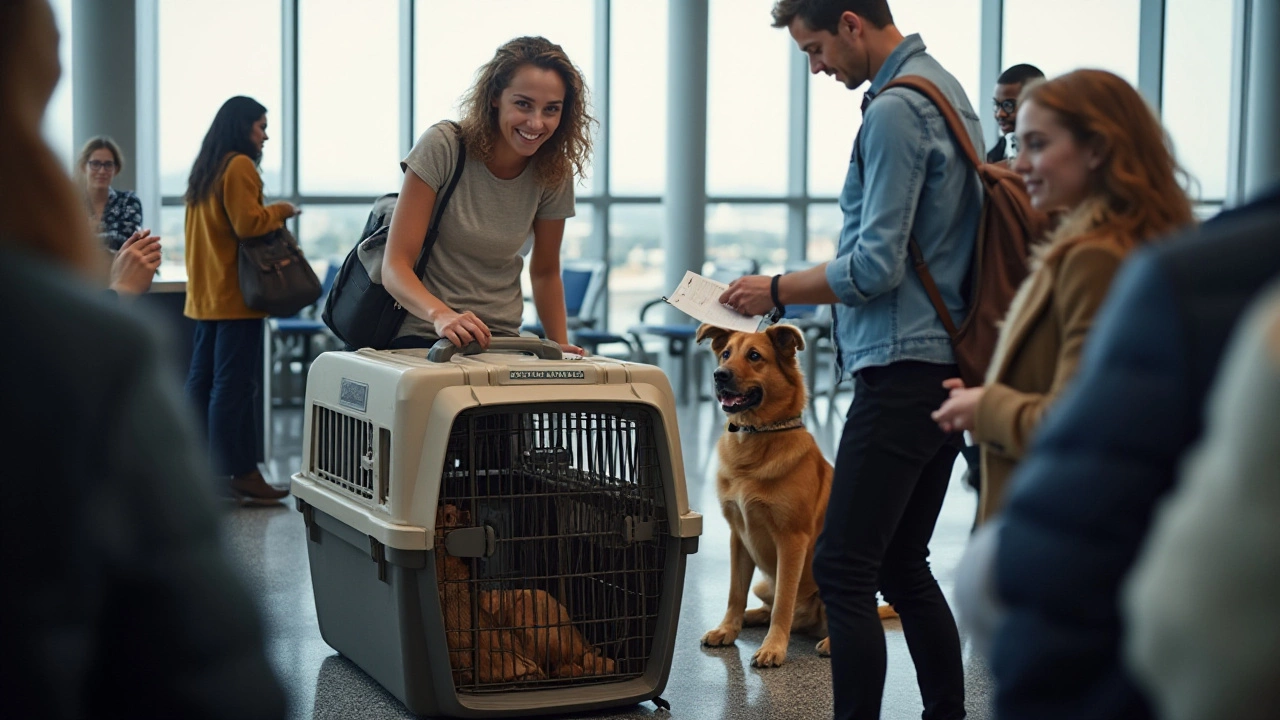
Preparing Your Large Dog for Air Travel
Getting ready for an air journey with your large dog involves more than just packing a bag. The preparation is akin to hosting a small event, where every detail counts in ensuring your pet remains comfortable and secure. To start, it’s important to introduce your pet to the travel crate. Choosing the right crate is crucial; it should be spacious enough for your pet to stand, turn around, and lie down comfortably—a snug fit without being cramped. Consider placing familiar items, like a favorite blanket or toy, inside the crate to create a comforting environment. This not only helps your dog acclimatize to the surrounding but also reduces the anxiety associated with travel. Spending a few minutes each day getting your dog accustomed to the crate is particularly helpful.
Health checks are the next priority. Schedule a visit to the vet well ahead of your trip. Airlines often require a recent health certificate to confirm that your dog is fit to fly and doesn't pose any health risks to others. During the vet visit, discuss any anxieties or health issues your pet might face during a flight. Sometimes, pet owners receive recommendations for calming aids or medication to ensure a smoother journey. You should also ensure your dog is up to date on all vaccinations, particularly if traveling internationally where customs officers may verify such details closely. It’s vital to have records available, and secured in a folder or online cloud service for immediate access, should you need them unexpectedly.
Nutrition and hydration play significant roles in travel prep. Feeding your pet a light meal about four hours before the flight is recommended to ease the stress on their digestive system. Ensure your dog is well-hydrated, but avoid giving too much water right before flying to prevent discomfort during the journey. If flights span several hours, consult your airline about their policy on pet hydration and snacking on-board. Some airlines will permit water bowls or feeders attachment inside crates if secure. Remember to adhere to any specific meal protocols your dog might follow to avoid unnecessary stress or digestive issues.
Mental preparation shouldn’t be underestimated either. Dogs are intuitive creatures, often mirroring our emotions. Taking your dog for long walks and engaging them in play can help burn off excess energy, making them more relaxed during the flight. A well-exercised dog is often a calm dog, so focus on ensuring your furry companion is both physically and mentally relaxed pre-flight. A few deep breaths and a relaxed attitude on your part might be necessary too! By maintaining a calm demeanor, you help your dog feel less anxious about the venture ahead.
Lastly, familiarize yourself with the specific procedures at the airport, especially those concerning pets. An efficient check-in and boarding process can alleviate much of the travel stress for both you and your large dog. Practically, this means arriving early to allow ample time for any unexpected situations like additional paperwork or crate inspections by airport security. Setting up reminders for important timelines and keeping all documents within reach can save the day when things become hectic. Preparation is key; it transforms potential chaos into a seamless travel experience, ensuring your journey with your four-legged friend begins and ends on a positive note.
Safety Tips for Flying with Large Dogs
Flying can be stressful for any traveler, but for large dogs, it can be particularly challenging due to their size and the unfamiliar environment of an airplane. Ensuring the safety of your substantial canine companion requires careful planning and consideration. One of the first steps involves selecting the right carrier since this will serve as your pet's sanctuary throughout the flight. The carrier should be spacious enough for the dog to stand, turn, and lie down comfortably. Additionally, make sure it meets the International Air Transport Association (IATA) and specific airline requirements to avoid any surprises at the airport.
An often overlooked but vital aspect of preparation centers around hydration. Ensuring your pet is adequately hydrated before the flight can help prevent issues such as dehydration, which can be exacerbated by the dry air inside the cabin. Placing a non-spill water bowl inside their carrier ensures that water is always accessible. While food is important, try to avoid overfeeding before the flight to prevent motion sickness and stomach upset, something many pet owners do not consider.
Acclimating your dog to confinement is critical as well. Start by letting your pet spend time in their travel carrier weeks in advance, gradually increasing the duration leading up to travel day. This method can significantly reduce anxiety during the flight. Using familiar items like a favorite blanket or toy can provide additional comfort, offering a touch of home in a strange setting. As George Jetson, a prominent pet behaviorist, says,
"The key to a successful journey with your pet lies in the preparation you do beforehand. Familiarity is your dog's best friend."
Consider the timing of your flight. Early morning or late evening flights might be preferable as airports are typically less crowded, and the temperatures, especially during summer months, are cooler. This can contribute to a calmer environment for your pet. Also, if possible, direct flights should be prioritized over those with layovers to reduce transit time. The less time your dog spends on the plane, the more comfortable they are likely to be. Handing the booking process with care to accommodate such needs reflects the essence of conscious traveling with pets.
Preparing your pet's documentation is a crucial step that should not be underestimated. Airlines typically require a health certificate issued by a vet within 10 days before departure. This ensures that your pet is healthy and up-to-date on vaccinations, protecting not only your dog but the health of other animals on board. Having these documents easily accessible in a secure folder is one way to streamline the travel process. It may also be beneficial to include any relevant medical history in case emergency medical care is needed during your trip.
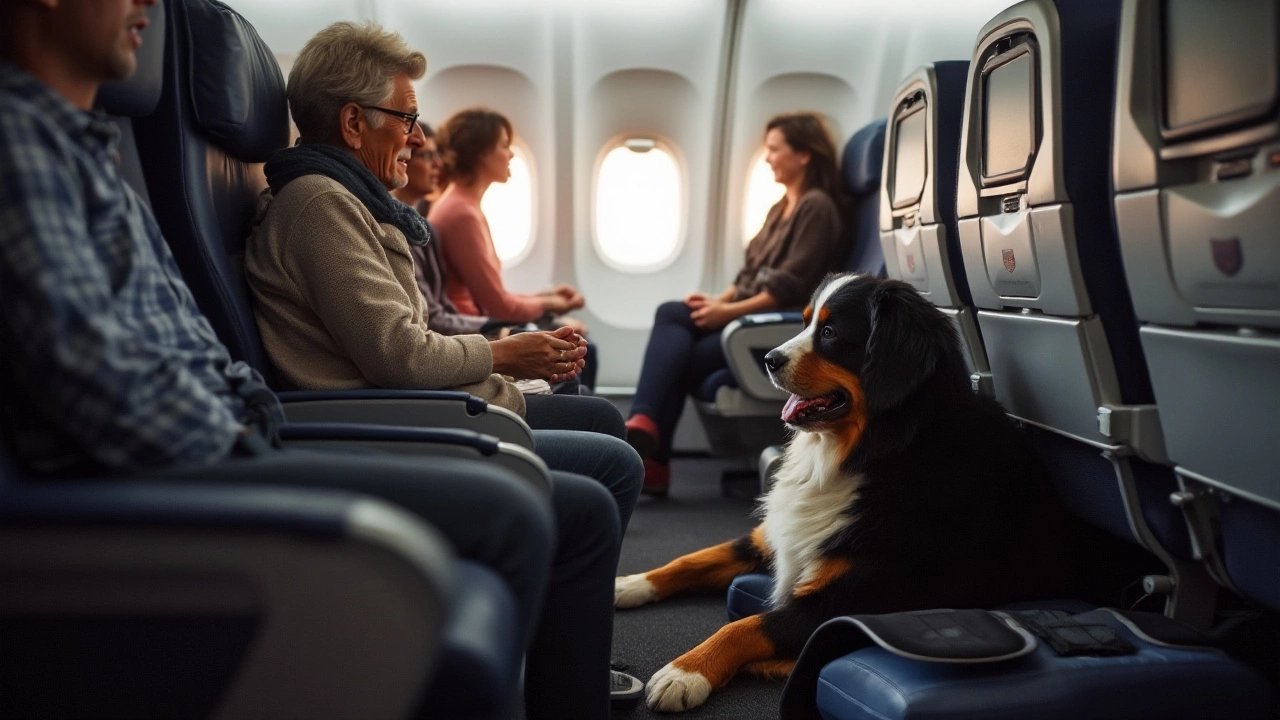
Essential Travel Documentation
When planning to travel with your large dog, proper documentation is crucial to ensure a seamless journey. This isn't just about having your dog’s health records in order, but also about understanding the specific requirements of global customs and the airline's regulations. Each airline may have its own policies regarding pet travel, and knowing these in advance can prevent any last-minute hurdles at the check-in counter.
Pet owners should always start by securing a health certificate from a licensed veterinarian. This document typically must be issued within ten days of your travel date. It ensures that your large dog is fit to fly and lists any vaccinations they have received. World-renowned animal welfare organizations emphasize the importance of these health records not just as formalities, but as measures that safeguard the health of all pets in transit. As Dr. Anne McCarron of the International Animal Health Institute once noted,
'Proper documentation acts as a protective layer, ensuring that an animal's health is prioritized, preventing the spread of diseases across borders.'
Additionally, some countries require an import permit for pets. This is vital when flying internationally. The import permit typically clarifies the entry requirements and can include obligations for further health screenings or quarantines upon arrival. Regulations can change swiftly depending on regional disease outbreaks, so staying informed with updated guidelines is essential. A practical tip is to regularly check the official government pet import/export websites of your destination for any changes.
Another document pet owners should be aware of is the microchip registration. Most international travel requires the pet to be microchipped with an ISO-compliant chip. Ensure the microchip details are up-to-date, reflected accurately in all documents. In case of travel to countries like those in the EU, these details are often non-negotiable. This system acts as a digital passport for your pet, linking them with their health and identification records globally.
Besides these documents, travelers often overlook the importance of translating their pet’s documents if traveling to a non-English speaking country. Though not always necessary, translating key documents into the local language can ease communication issues with authorities or in unexpected veterinary visits abroad. Pet travel experts suggest hiring certified translators familiar with veterinary terminology to ensure the accuracy of these translations.
Included below is a simple checklist to keep track of your essential travel documentation:
- Updated Health Certificate from a Vet
- Vaccination Records
- Import Permit (if required)
- Microchip Registration and Details
- Translations of Key Documents (if necessary)

